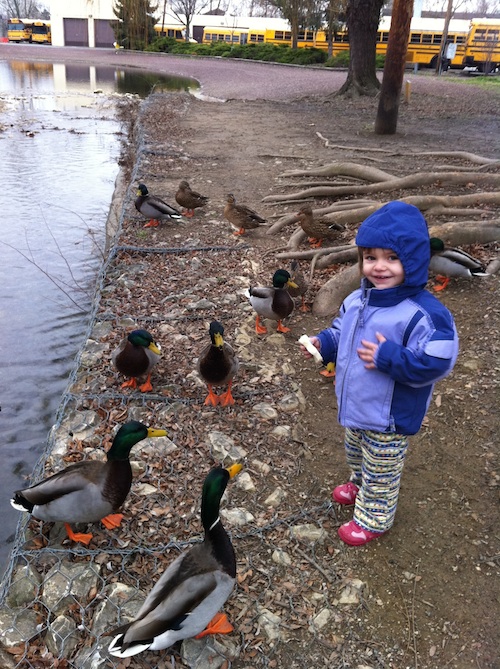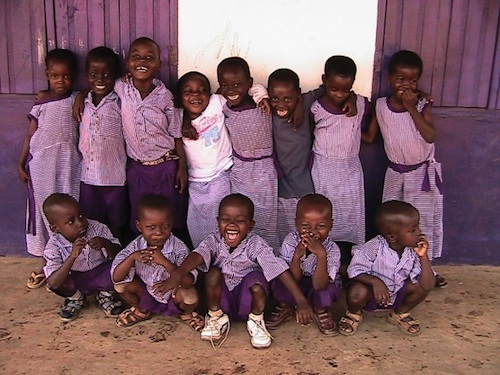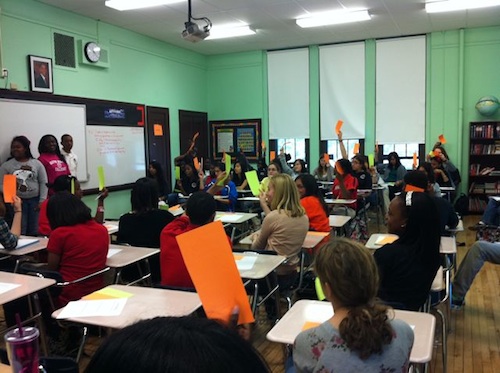Serendip is an independent site partnering with faculty at multiple colleges and universities around the world. Happy exploring!
Blogs

"The Source Material Is the Most Original"

Yeah, since I like to "bend" the rules, I'm posting about something different from academic writing within a particular discipline. :)
As I've mulled over our class discussion and the reading for the week, I've started to notice a trend. There seems to be a binary between that which is citable (so the source material) and the paper, or equivalent, that we are creating that takes from the source material. However, I don't think that this is the case. Rather, I don't think that what we consider to be the source material is completely original. I think that the "source" is not limited to just the one piece of material. Instead, it is infinite and can't trace where the source actually begins. I'm using an image of reflective mirrors (as is seen above) to demonstrate my point.

[360] Learning and Narrating Childhoods: About This 360
Learning and Narrating Childhoods – A 360 taught by Pim Higginson (French and Francophone Studies), Alice Lesnick (Education), and Rob Wozniak (Psychology). Professor Higginson's course is "Teaching (in) the Postcolony: Schooling in African Fiction." Professor Wozniak's course is "Culture and Development." Professor Lesnick's course is "Literacies and Education."

360° is a new interdisciplinary experience that engages several aspects of a topic or theme, giving students an opportunity to investigate thoroughly and thoughtfully a multitude of perspectives. A cohort of students takes a cluster of classes over the course of a semester, focusing on the history, economic concerns, cultural intersections and political impact of an era, decision, event, policy, or important scientific innovation. 360° participants hone their arguments and insights through writing and research, develop strategies for teamwork that push the limits of their talents and creativity, and work with professors and scholars to promote big-picture thinking.

[ED250] Resources about Titagya Schools and Ghana
Titagya Web site http://titagyaschools.org/wordpress/
Leslie Dodson, Don't misrepresent Africa.
Chimamanda Adiche, The danger of a single story. http://www.ted.com/talks/chimamanda_adichie_the_danger_of_a_single_story.html

[ED250] Titagya Blog
A resource: the blog for the partnership between Titagya Schools and the Bryn Mawr/Haverford Education Program.
From the Titagya blog,
This web page is designed as a place to collect and generate ideas, experiences, and connections useful to developing a partnership between the Titagya program to build preschools and kindergartens in Northern Ghana and the Bryn Mawr/Haverford Education Program, at Bryn Mawr and Haverford Colleges, outside of Philadelphia Pennsylvania. To begin, the partnership is focusing on exploring cross-cultural curriculum development, with a focus on the themes of conflict resolution and the role of creativity, interaction, and play in learning.

We will not be actively contributing to this blog in ED250, but it is still a repository of learning from Bi-Co students in past Education classes.

[ED250] Syllabus
The syllabus "lives" on Google Docs. It may change throughout the semester, so check the online version for the most current information about assignments.
Click for the syllabus (opens in a new window).


2011 Artists Spotlight from Advocate

Diva 4, Kurt Kauper
Check out Advocate editors favorite art pieces from 2011 here.
This painting by Aaron Smith is my favorite! What's yours? Maybe one way this class site can continue is each of us keeping an eye out for our favorite art piece entangled with gender and sexuality during 2012? Post here!

Rip-staver, Andrew Smith
------
Wishing you a rejuvenating, relaxing, refreshing start to 2012.

My Final Diffraction
This diffraction is not easy for me to write. I think that’s because this class has left me feeling largely confused. When we began the class, I saw myself as someone who loved Gender and Sexuality Studies—not so much the theories behind them as the case studies I read about and saw all around me (as a Biology major, I’ve noticed that I tend to reject the idea that one theory can explain all of gender or all of society—I think this is because in anthropological sense, there is no theory that computes to a scientific law. This is, for me, a weakness and a strength). The first reading by Barad caused me some distress, because I couldn’t understand why we were working so hard to connect physics and gender. In my mind, physics and gender both connect to everything else (indeed, if you get philosophical enough, everything connects to everything else), but that doesn’t mean we should spend our time dissecting the connection.
After Barad, I was further confused by the focus the course took on disability. I think disability is an important topic, and one that merits discussion, but I didn’t feel like our discussions ever had anything to do with gender. Once again, the sheer interdisciplinary-ness of the course had me feeling lost.

Male Athletes and Rape Culture: Structural Violence in the World and at Haverford (TRIGGER WARNING)
(TRIGGER WARNING)
Dear friends,
As has become my custom, I would like to introduce this web event with a short description of my motives and hopes. I want to tell you how this web event came to be (a long story in this case), what I hope to communicate through this web event, and what future directions are possible.
Allow me to start at the beginning. In the past few weeks, I have found myself increasingly aggravated, confused, and above all inspired. My aggravation stems largely from Haverford’s policies regarding rape and sexual assault, which seem to become more and more inadequate the more that I learn about them (for anyone who hasn’t already done so, I strongly recommend reading AmyMay’s web event Biological Discourse and Rape Culture at Haverford College and jmorgant’s web event “Consent is Sexy” at Haverford: Not Yet). While my belief that the Haverford policies are insufficient was immediately strong and clear, I grew confused about how to effect change. I pondered a variety of questions, including:

Final Presentations
This was possibly the most insightful, honest, awesome way to wrap up the semester. I feel as though it really mirrored my experiences in this ESem and was really happy to have been a part of it. While each of us had the opportunity to work with our groups to convey in a short, 10-minute presentation what it is that we wanted to say about class and education, I think this series of final presentations went above and beyond that goal. I think rather than tying things up neatly at the end, we left it in the spirit of our ESem, in a continuing dialog, a continuing thought process, and a continuing relationship with all the students in this class. I am really grateful for having been a part of it all and I think we really got the chance to see many talents of our peers from slam poetry to rap music videos to creative games and presentations, while bringing more ideas of class to the foreground. I really wanted to say thanks to the class and to Jody and Anne for this awesome opportunity and I hope that we continue this dialog and awareness of class on campus.


